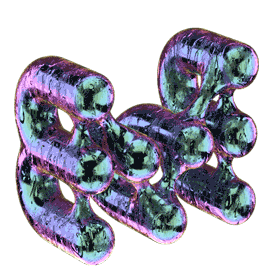




















TIME–DIP
time-dip
Berlinskej model, Prague, 3.4.-6.4.2024
Opening: 3. 4. 18.00h
Open daily: 11–18h
Curated by Agáta Hošnová & Karolína Voleská
Photo: Michal Ureš
a drop of pigment blackens a still surface, a groove cuts through smooth, moving waves shape the texture of the sand into titillating dunes, dust settles on majestic marble in pastel colours, vandals from a future disturb the integrity of classical culture, hot air vibrates our vision, tenacious flowers always find their way through concrete, winding paths solidify in molten lava, sea shells are washed up with iron waste, fishermen find fragrant ambergris on the beach
We peeled back the layers one by one until the individual coatings began to shine through. The colours of some of them were altered by sediment; others were covered with tiny stalactites. Several planes were so tightly bound together that we could not separate them, and they became invisible. Beneath the latter, we could already see fragments of temporal deposits, only to pull them out from under the artificial radiators and expose them. It was obvious that they had stopped in the middle of their evolution – their components were halted in the temporal freeze. Sedimentary rocks, formed from skeletons, lithium salt and dust, had settled in places on their crusts. We noticed several expanding holes from which their (re)productive parts had yet to emerge. Geologic deposits rested on stones from which civilizations in the future would create columns with decorative capitals, and alluvial foam would form from this material after its disintegration. In the imperceptible duration of geological time, the human figure, shaped by its classifying orders, flickered for a moment to enter into the chemical processes of creation and extinction. A fine powder remained behind our fingernails.
Natalia Domínguez Rangel is a Colombian/Dutch visual artist and music composer currently living and working in Vienna and Amsterdam. Her practice includes making sculptures, installations, and performances, Natalia’s work delves into the intersection of sound and sculpture, crafting immersive encounters.
Filip Rybkowski is a Polish artist who uses the critical act of reconstruction combined with reflection on the political nature of the gesture of restoration, conservation and preservation. His works transcend the traditional boundaries of painting, entering the field of mosaic, objet trouvé and installation. Rybkowski combines the poetics of the fragment, juxtaposing original artefacts with reconstructions and paintings.
Stanislav Zábrodský studied in the Intermedia studio at the Academy of Fine Arts in Prague and in the Sculpture studio of Indonesian ISI Yogyakarta. In his current artistic practice, he focuses on working with composite materials, which he uses as synthetic simulations of time-spanning geological processes. Objects with this perspective represent a shift in time and attempt to awaken the awareness that we live in future geological layers and formations.



